Borzoi 101: The Essential Guide
| Origin | Russia/Belarus |
| Size | Giant |
| Height | 26 – 28 (or up) inches |
| Weight | 60 – 105 pounds |
| Life Expectancy | 9 -14 years |
| Breed Group | Hound Group |
| Affection Level | ⭐⭐⭐ |
| Friendliness | ⭐⭐ |
| Activity Level | ⭐⭐⭐ |
| Barking/Howling Level | ⭐ |
| Pet Friendly | ⭐⭐ |
| Kid-Friendly | ⭐⭐⭐ |
| Shedding | ⭐⭐⭐ |
| Easy to Groom | ⭐⭐ |
| Easy to Train | ⭐⭐ |
Table of Contents
Origin
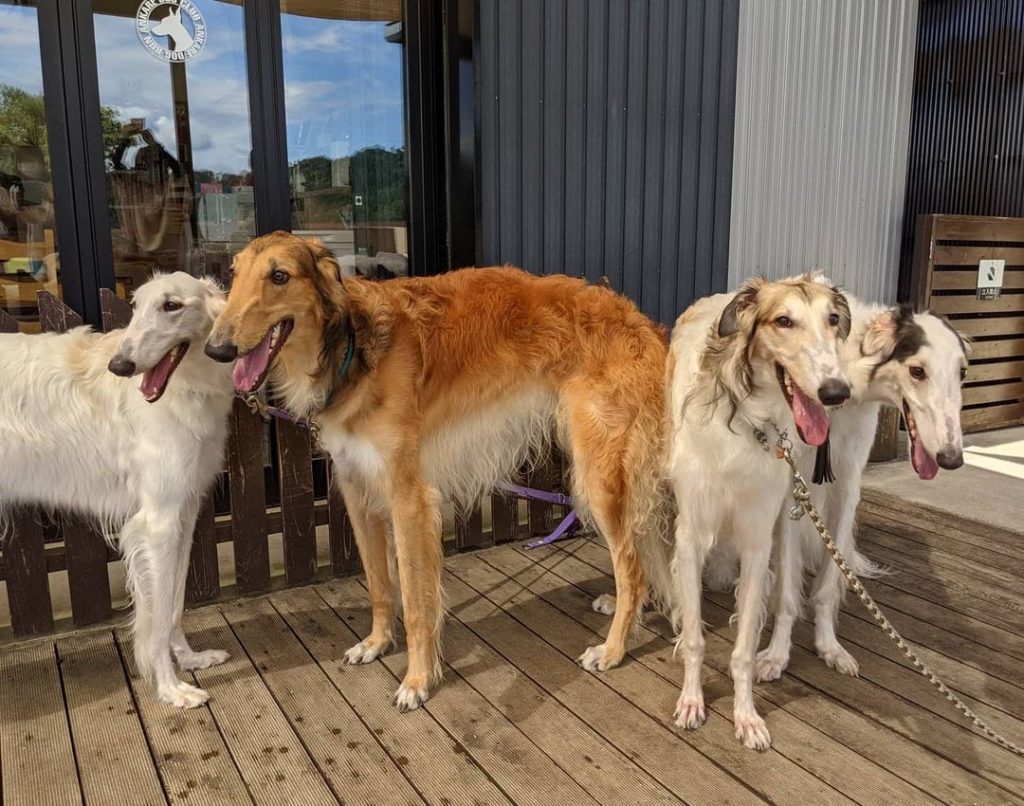

The Borzoi is a hunting sighthound descended from the working dogs brought over by immigrants from what we now consider as Russia in the 17th century. In the early ages, Russians were fond of naming dogs the descriptive way and the masculine singular form of the archaic Russian adjective “Borzói” means fast.
Originally, Borzois are bred to hunt. They are capable of dealing against the strongest or even the most aggressive of quarries. Typically for the Russian hunters, they kept on their breeding programs exclusive only for the fittest and fastest hunting dogs which were determined by conducting hunting trials. Normally for this dog, hunting is a game that needs to be done in packs which would sometimes include more than a hundred other hunting canines and their human companions to guide them in their pursuit.
It was in the early 1650s when the breed standard for the Borzoi dog was established. This has been one of the prominently bred dogs by Russian aristocrats which went on for hundreds of years. When the Soviet era happened, exported Borzois weren’t commonplace, but enough numbers of this dog reached several parts of the world in the 19th century.
Speculations suggest that this large canine came to America by 1889 through William Wade of Pennsylvania who brought one home from Freeman Lloyd.
Appearance
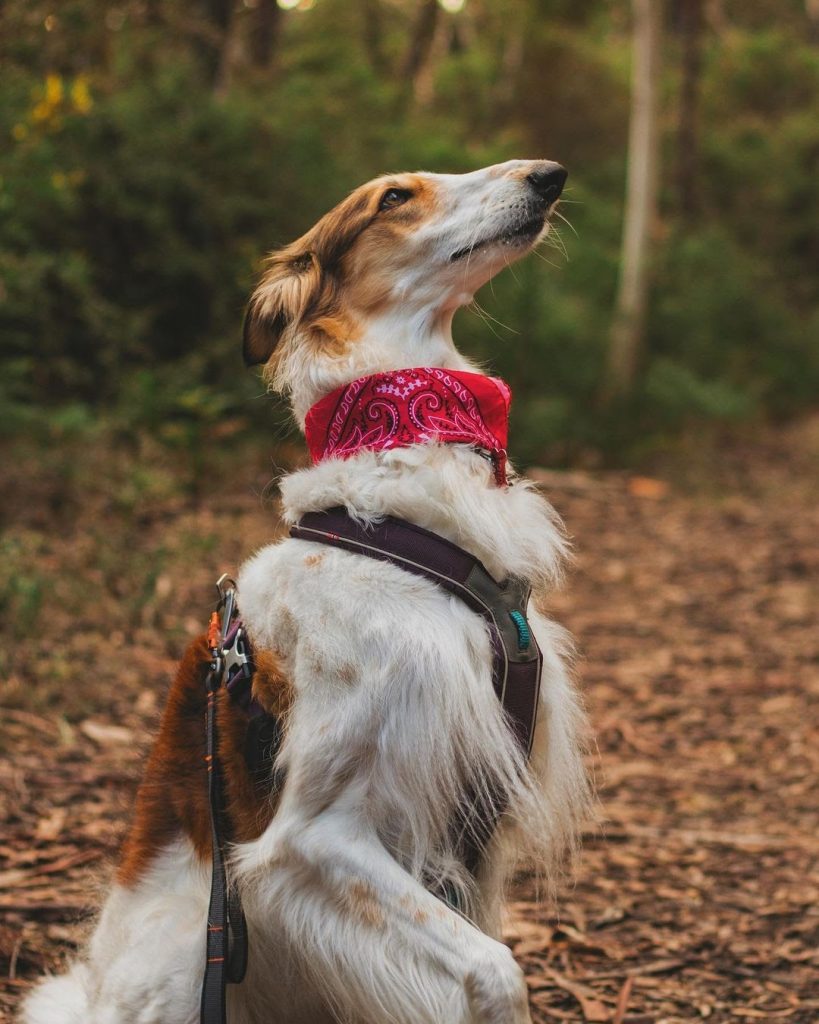

The Russian Sighthound is a giant breed that bears the resemblance of several other dog breeds like the Saluki and the Afghan Hound. He is tall, graceful, and capable of running after prey with agility and determination. The most prominent feature you’d instantly notice is his splendid head shape that is extended and narrow which at the same time complements his long and slender body structure.
His legs are slim yet strong while his chest is deep and his loin arches. Every single physical characteristic of the Borzoi gives out a swift looking impression evident when he’s out for a hunt.
It is also considered one among other canines who enjoy a wide variety of coat colors, combinations, and patterns which may include:
| Color | Color Combination | Pattern |
| Black | Black & Tan | Brindle |
| White | Black & Brindle | Red Brindle |
| Blue | Black & Cream | Sable |
| Grey | White & Brown | Merle |
| Fawn | White & Grey | Black Mask |
Typically, the coat texture may be flat, curly, or wavy and is often described as long, silky, and water-resistant. Some areas are dense and lengthy while others are covered by shorter and smoother hairs especially on the ears, head, neck, and front legs. The rear end of the Borzoi including the tail is feathery-like which manifests a majestic display of its overall appearance.
The exact measurement of this dog’s size largely depends on gender. Borzois may grow bigger than expected, yet a Borzoi meant to be a show dog must reach the minimum height according to breed standard:
| Gender | Height | Weight |
| Female | 26 inches and up | 60 to 85 pounds |
| Male | 28 inches and up | 75 to 105 pounds |
Temperament
In meeting a Borzoi, anyone must expect that although he is friendly, his reaction to every individual will not be the same in all circumstances. Ideally, knowing his temperament will give you enough of an impression in understanding how to properly deal with this giant canine more so if you are thinking of bringing one home.
Affection
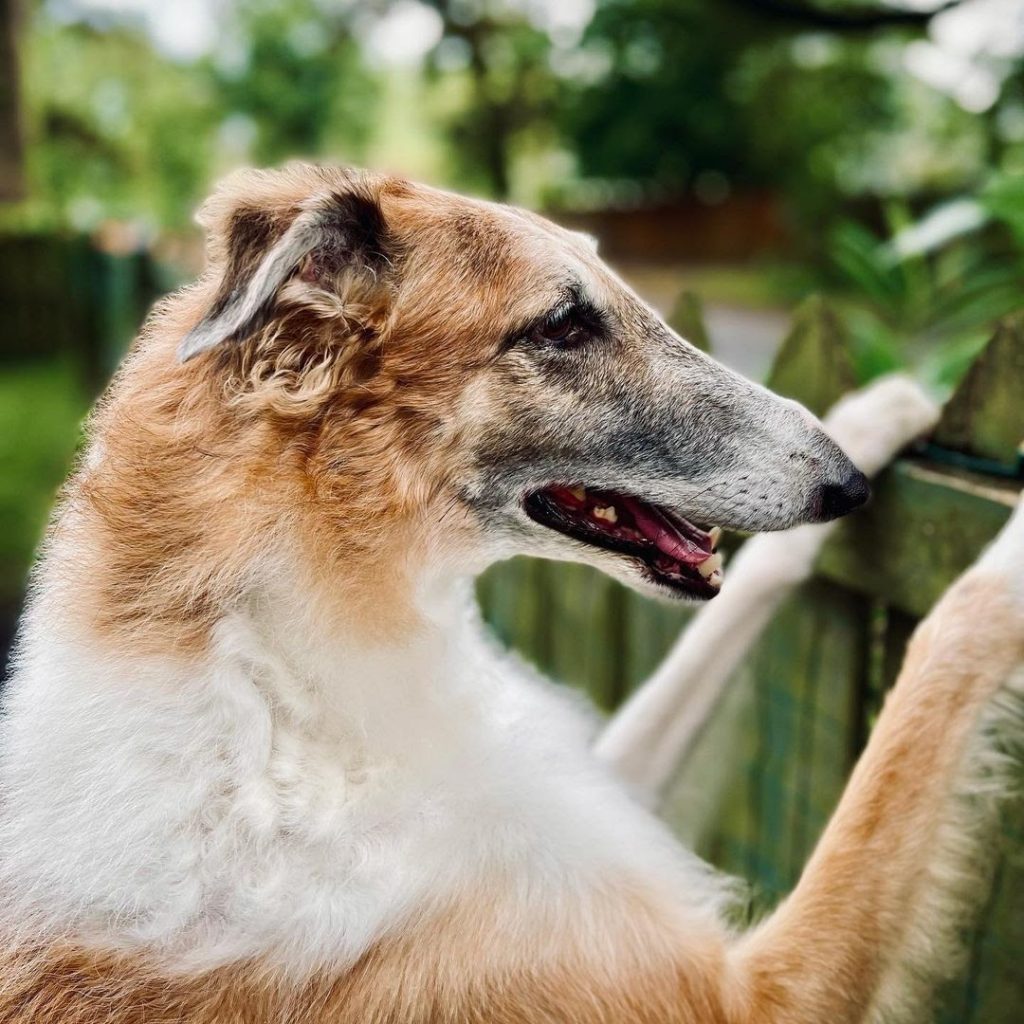

The Borzoi is extremely affectionate with his owner despite his strong sense of independence. He loves to know and feel that his family cares for him even in the simplest of ways such as petting him whilst chilling on the sofa. He may be a hunting dog that exudes an atmosphere of toughness, but deep inside this doggy, is a loyal friend who couldn’t stand being alone for too long or be treated poorly.
What makes him more appealing to Borzoi owners is his quiet and sensible nature. His kingly manners also attract people he meets, especially if you bring him to doggy parks. Since he’s not as boisterous as most other pooches, those around will usually find him a dog they could easily fall in love with.
Friendliness
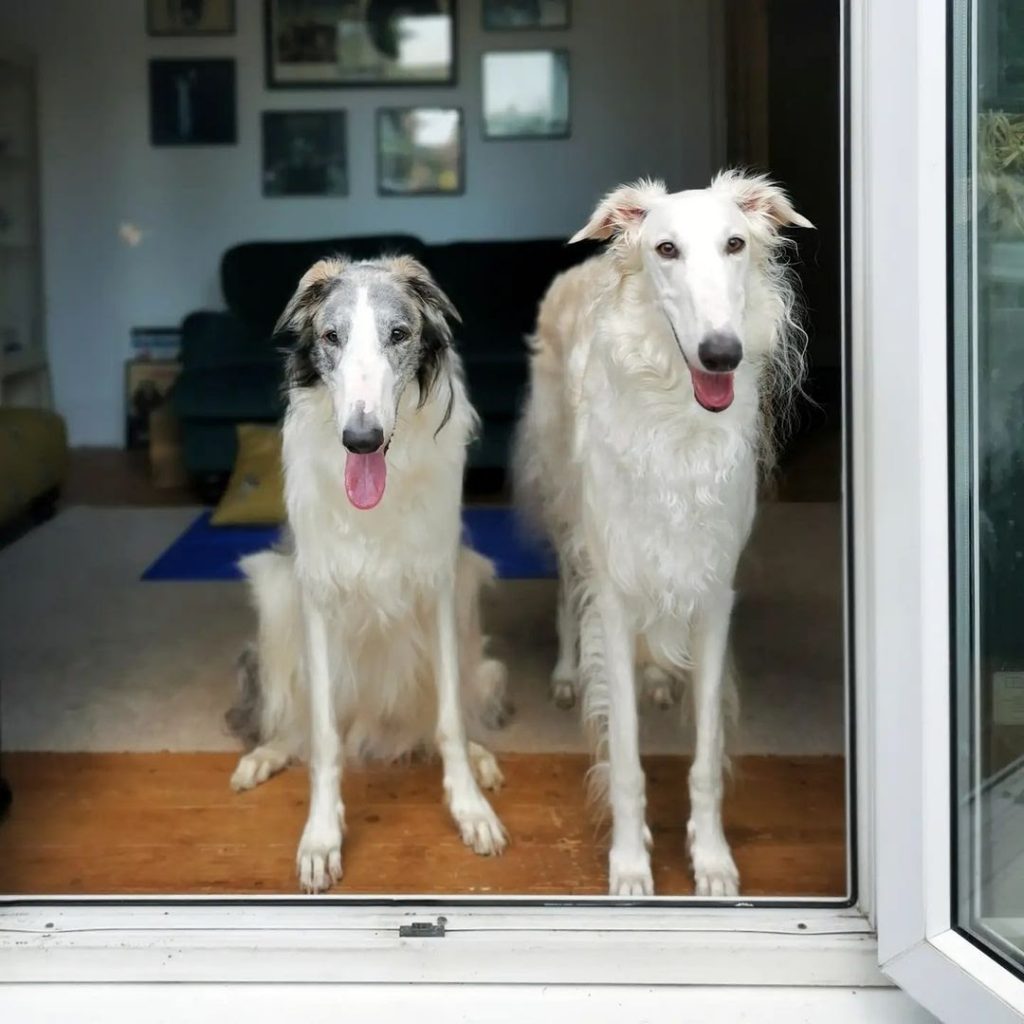

Borzois are normally friendly to people he’s familiar with. His social level, however, is not the same when he’s dealing with a stranger. More often than not, his feelings range from distant to somehow friendly. Gain his trust patiently and he’ll, no doubt, establish a meaningful bond with you.
This breed is also great with kids, but it is more preferable to let him mingle with them under supervision. If you want to secure a stronger relationship between your four-legged dog and your children, raise them together! The only thing any Borzoi owner should watch out for is how the little youngsters deal with the dog. Remember that the Borzoi breed is a large one and can potentially cause mild to fatal mishaps as a reaction to any mishandlings.
Lastly, if you’re thinking of getting a second dog, opting for another large breed is recommended. This is because the Borzoi normally does well with other canines of his size. If you mix him up with a Chihuahua, he’ll chase the little fellow endlessly and this might even lead to something worse. This Russian dog has an independent mindset and during the chase, he’ll most likely not stop even if you tell him to.
Activity Level
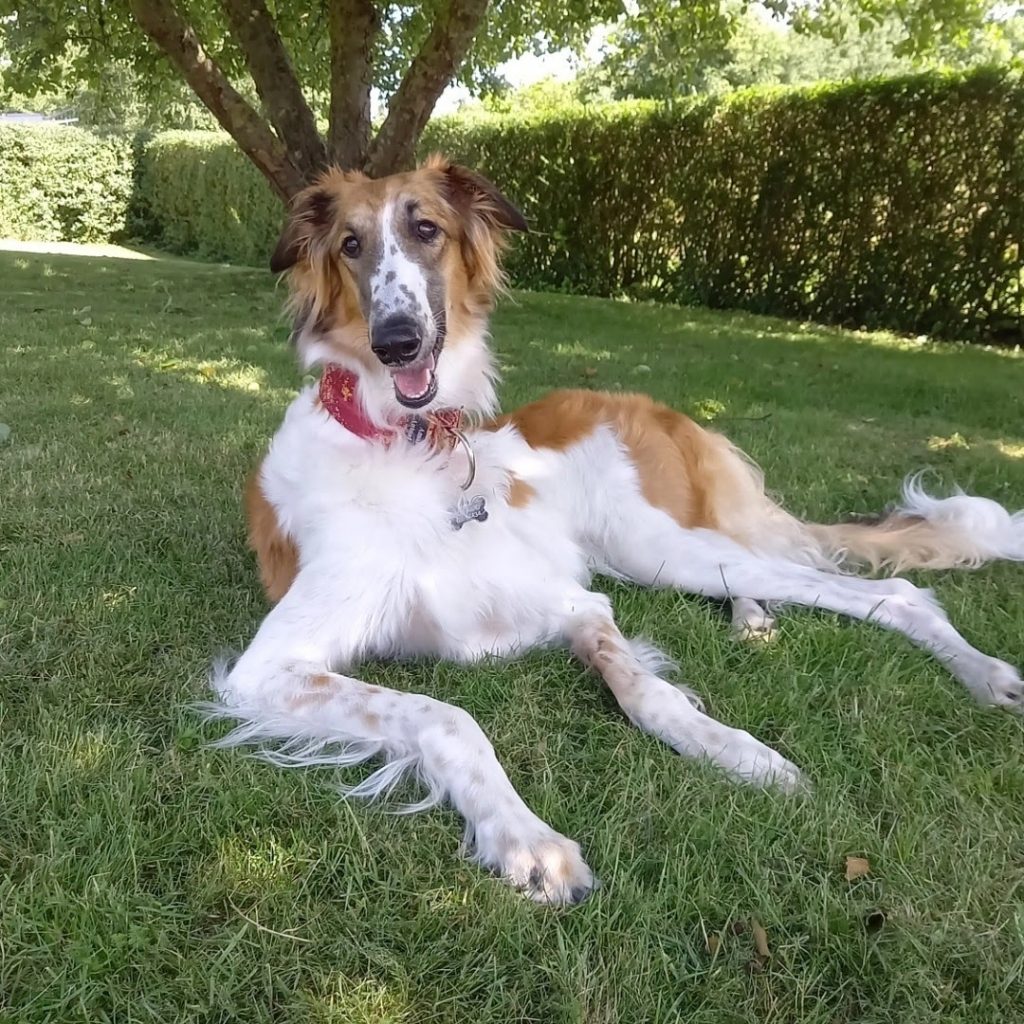

Most of the time, Borzois reflect the kind of owner they have. If you fail to provide them with activities to do, you’ll find yourself dealing with a couch potato who needs more than just a push to take him out for a game of fetch. Moreover, although this Russian canine has a history of doing rigorous hunting games, you shouldn’t assume that he has an endless amount of energy.
Creating simple tasks which will enable you both to bond with each other is recommended. If ever you let him out to play, the area must be fenced. The Borzoi, being a sighthound, can easily spot moving animals. His vision is so influential that once he decides that he wants to run after a rabbit or a squirrel, he can no longer hear your commands.
In case you have to bring him out on an open field, your dog should stay on the leash.
Care
The natural regal look of the Borzoi might be scaring some prospective owners away and might make them think that his needs will be as high-maintenance as he physically presents himself. However, this needs to be debunked. The Borzoi is an easy-to-take-care dog breed and anyone who is dedicated to having one can certainly do so.
Grooming
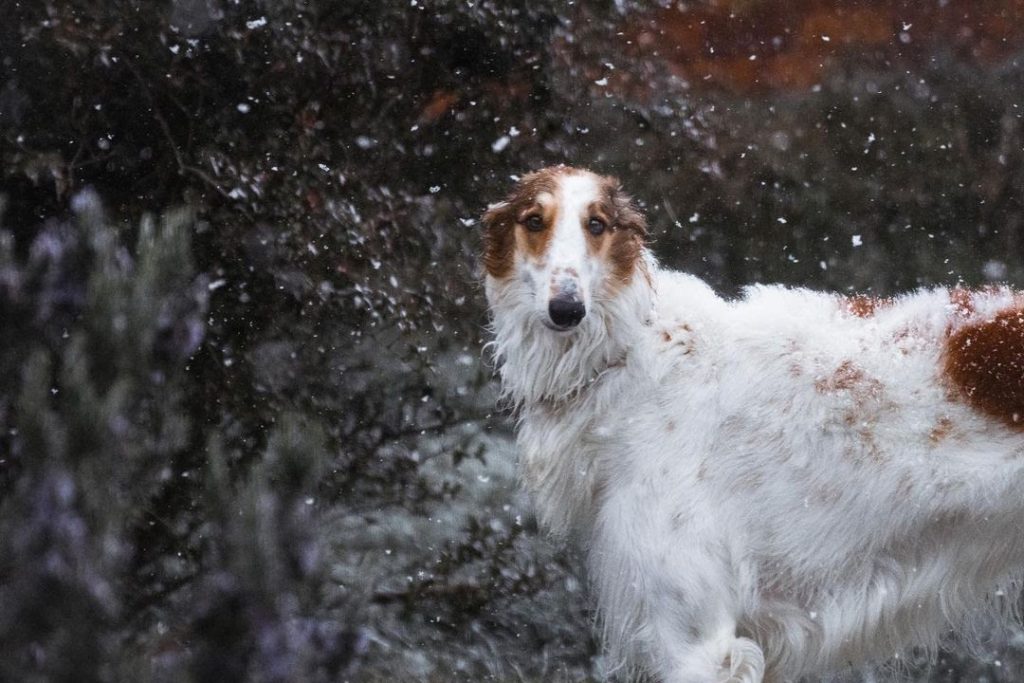

Considering coat length, the Borzoi doesn’t need trimming. Since he sheds regularly especially during spring and fall, a twice-a-week brushing using a pin brush is recommended. Haircuts are unnecessary and his dirt-resistant coat will only require him to bathe rarely. This dog is cat-like and likes to groom himself, so most of the load is taken off of your list.
Just like any other dog breed, your Borzoi would also need regular maintenance for his teeth, ears, nails, and paw pads. Check for any signs of infections or simply ensure that these areas are clean.
Food and Diet
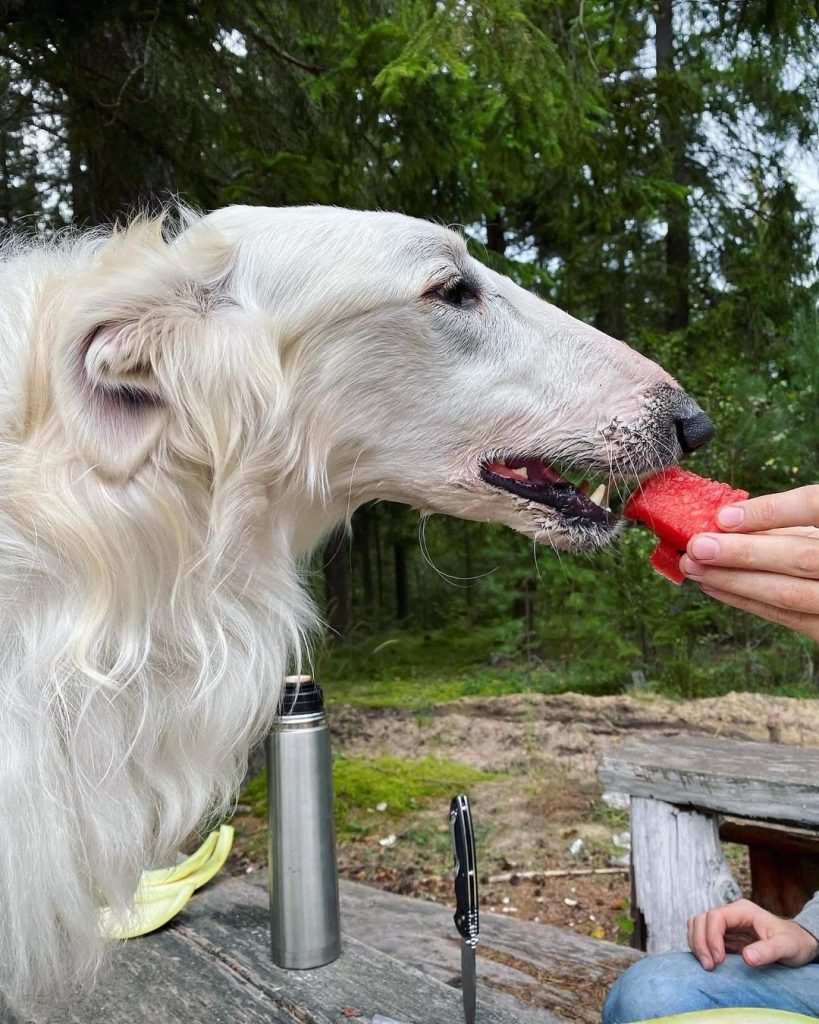

Borzoi puppies and young adults need great amounts of proteins for their development. The breed is more active during these stages and they would need a fully-packed diet. The National Research Council of the National Academies suggests that a 90-pound Borzoi dog needs 2038 calories daily. Those who are spayed, neutered, or geriatric need lesser amounts. If you’re coursing with your dog every weekend, you can give him about 2265 kcal more.
Visiting your local vet and letting him assess your dog can help tailor your Borzoi’s right proportion for meals. Since every dog is an individual, the metabolism and other factors will vary.
Exercise
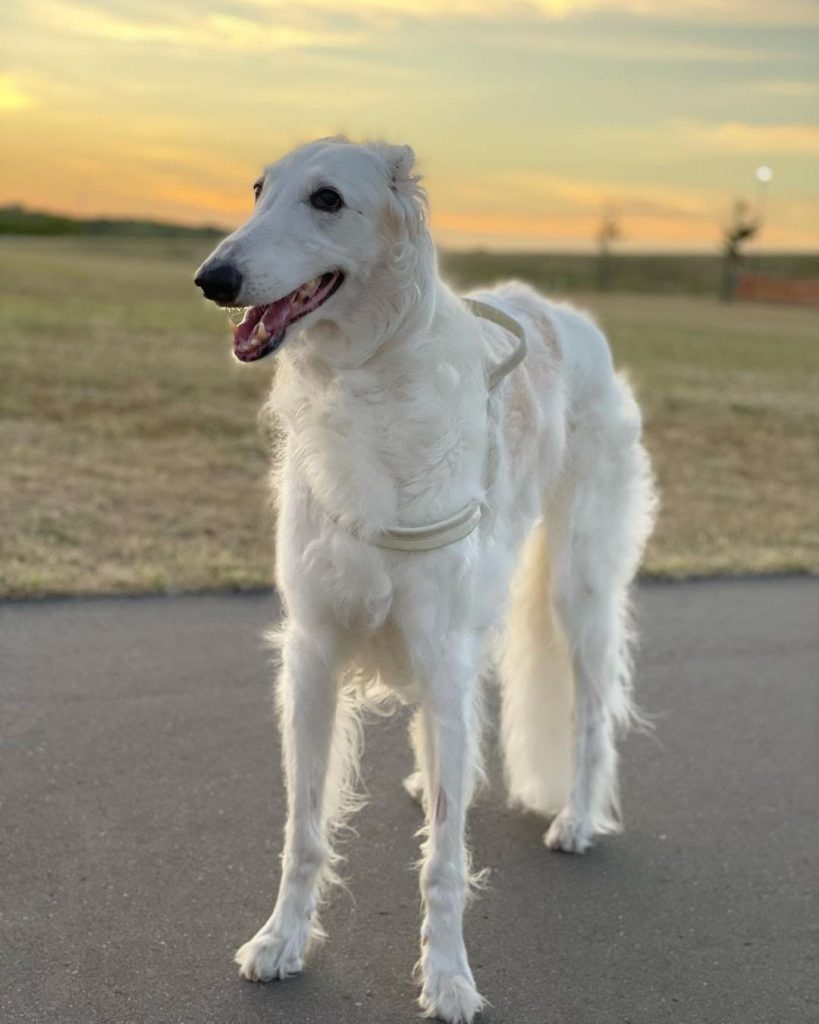

Although Borzois are great in size, their need for exercise doesn’t complement it. Preferably, owners or even those who are still planning to get this dog type should consider having a garden so this gentle canine would have some time sniffing and exploring his surroundings. Keeping them busy will contribute a lot in terms of his need for movement.
Additionally, The Kennel Club recommends that you spend at least an hour walking your dog out or bringing him for a jog. You may divide this into shorter sessions in the morning and afternoon.
Training
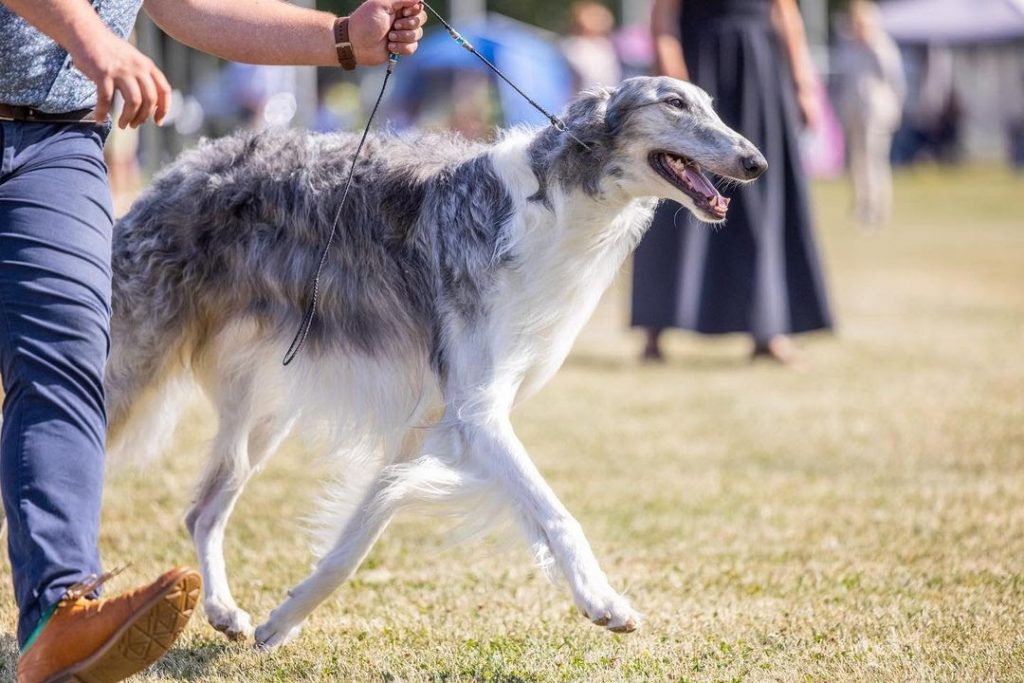

The Borzoi breed is unsurprisingly intelligent. They are dependable dogs even when they were widely used as hunting hounds. However, the number one drawback about this dog is that his intense free-spiritedness paves the way for him to act out stubbornly, thus making training a lot more difficult.
This may sound overwhelming to some but as long as you go for positive training methods, your well-mannered companion will eventually learn to obey you. Never lose patience nor become inconsistent. Also, it is better that you train the dog yourself rather than send him away for obedience training. By doing so, you’re not only teaching your dog the important rules of the house but also develop a more meaningful bond that would push him away from displeasing you.
Health Problems
The Borzoi may live for up to 14 years yet certain illnesses can still strike this regal canine. The most common ones every owner must be aware of are:
- Cardiomyopathy
- Hypothyroidism
- Gastric torsion
- Hip dysplasia
- Progressive retinal atrophy
Pros and Cons of Having a Borzoi
Pros
- He has an independent temperament
- He attracts public attention
- Loving
- Affectionate
- Self-groomer
- Not a high-maintenance dog
- Loyal to his family
Cons
- Very sensitive
- Can get sick if the environment is hostile
- Hard to train
- Has a high prey drive
- Not for apartment-dwellers
Do Kennel Clubs Recognize the Borzoi?
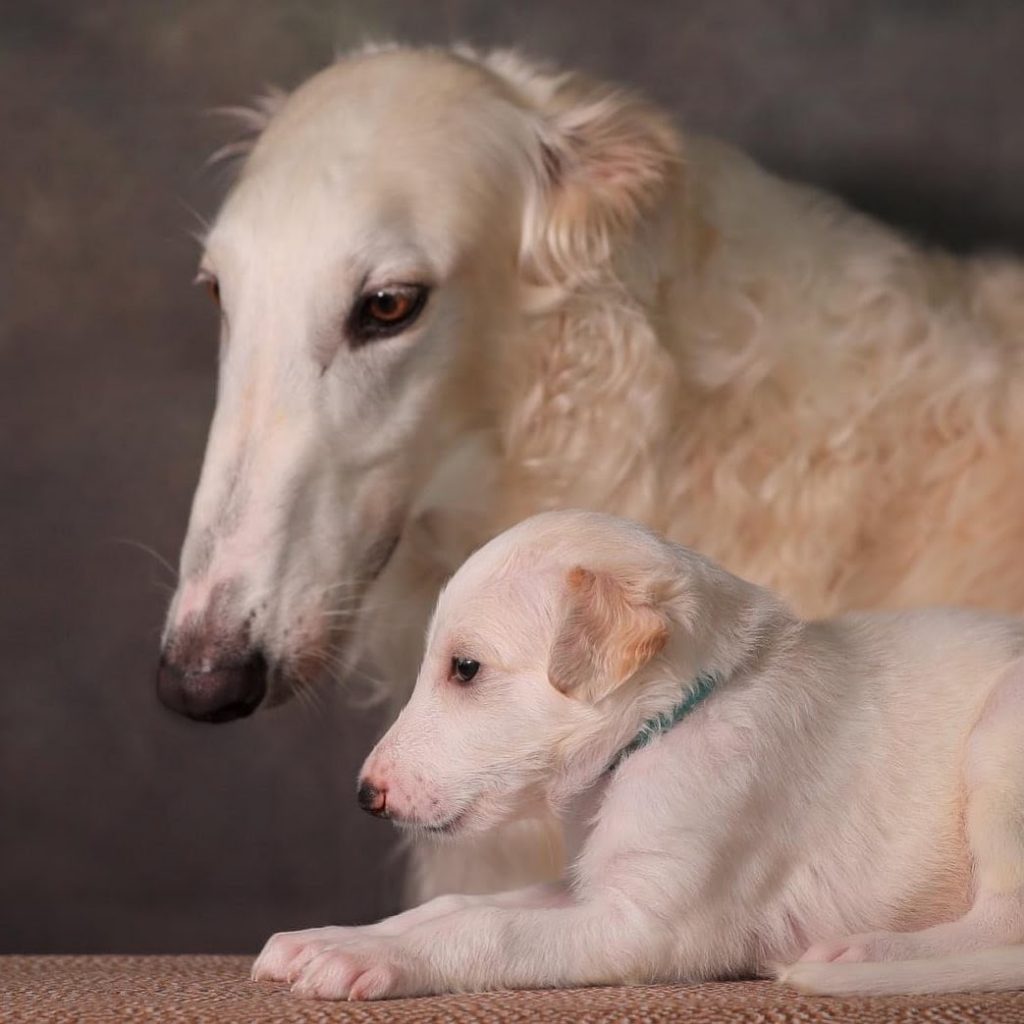

Definitely! The American Kennel Club recognized the Russian Sighthound in 1891. Other major kennel clubs such as The Kennel Club (UK) acknowledge this majestic large dog too. Presently, he’s 103rd out of 200 dog breeds in AKC’s breed popularity polls. There has also been an established club exclusive for this canine namely, the Borzoi Club of America, Inc which you might want to join once you bring home your Borzoi puppy!
Cost
Are you strongly drawn to the looks of the Borzoi? If so, you’re probably curious to know the price. Well, a purebred Borzoi can cost you anywhere between $2000 and $5000. This may increase if the quality is superb. However, a greater way to save money is by adopting one from a nearby shelter. A Borzoi rescue will only be around $150 to $500.
Where to Adopt or Buy a Borzoi
If your mind is fixed on getting this wonderful breed, there are several places you can check out if you’ll be buying one from a breeder. Here are some trusted websites you can check:
Want to adopt instead? These shelter homes might just provide you the right Borzoi companion you’ve been looking for!
There are only a handful of dogs that are as stunningly dignified as the Borzoi. This is a dog that runs as if he’s floating from the ground yet his angelic aura is matched with his deadly prowess to bring down wolves. Certainly, this dog can’t be let loose around any other unfamiliar dogs. If the Borzoi mesmerizes you, he might be the perfect pup to get!
